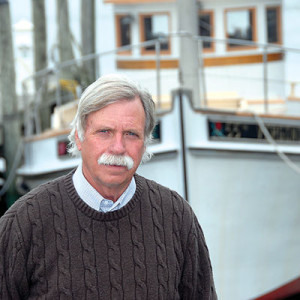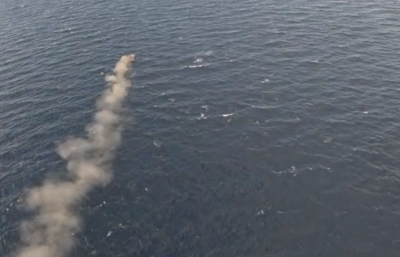With the decline of wooden boats throughout the Mid-Atlantic, mass-produced fiberglass boats have taken their place. This is true up and down the Mid-Atlantic region.
Privateers have been built since the 1970s. In 1990, the late Gilbert Radcliffe purchased the firm and the Radcliffe family have been building Privateers ever since, today under Radcliffe Boatworks in Belhaven, N.C.
Bradley Radcliffe, grandson of Gilbert and shop foreman said that off the top of his head, he would say 50 percent of their Privateer boats end up in commercial fishing. The firm recently changed construction methods and started building the boats using Coosa board, a fiberglass composite.
“Our customers love our boats, and we have generational customers returning to us,“ he said. “They seem to like the Coosa board style of new construction.“
He said the 24- to 26-footers are the most popular size for commercial fishermen, being used for crab and lobster potting, gillnetting, oystering and clamming.

This Privateer in Manns Harbor, N.C., is used in the state's commercial blue crab fishery. Larry Chowning photo.
I wrote recently about Privateer boats in the North Carolina blue crab fishery. Privateer has also made some inroads into Virginia’s gillnet fishery.
Fisherman Eddie Gaskins of Gaskins Seafood of Ophelia, Va., had for decades fished stationary pound nets in the Chesapeake Bay and had all the boats and gear to go along with the fishery. He had a large wooden deck boat named Bobbie that was used to haul stakes and payload and a half dozen large wooden seine skiffs.
A decade or so ago, Eddie’s sons joined the business and encouraged him to redirect his efforts toward gillnetting, a much less labor intensive fishery. This led the family to move away from wooden boats in favor of a fiberglass boat.
“We were out there in the bay one day working nets in a 24-foot fiberglass boat when all hell broke loose (with the weather) and I didn’t think we were going to get home,” says Gaskins. But thankfully they did, and upon arrival, “I told my wife, Diane, we are going to have to find a better boat, or one of us is going to get killed.”
This led to a call to Belhaven, N.C., where the Radcliffe Boatworks crew custom tweaked a standard 29-foot Privateer hull for Gaskins. The 29' x 11.5' hull has worked out great, says Gaskins.
Ordinarily, a house comes with the standard 29-footer, but Gaskins opted for no house and had a shorter forward bow deck installed. Also, a center console was added and moved as far aft as allowable to provide for as much forward workspace as possible.
The Gaskinses had the Radcliffe crew install an extra fuel tank under the deck floor. The capacity of the two fuel tanks is now 250 gallons, and the boat is powered by a 350-hp V-8 Yamaha outboard engine.
“I don’t miss all that maintenance that we used to have to do every spring on our wooden boats,” says Gaskins. “There was a time when I thought I’d never own a fiberglass boat, but times do change and you have to change with them to stay in this business.”






